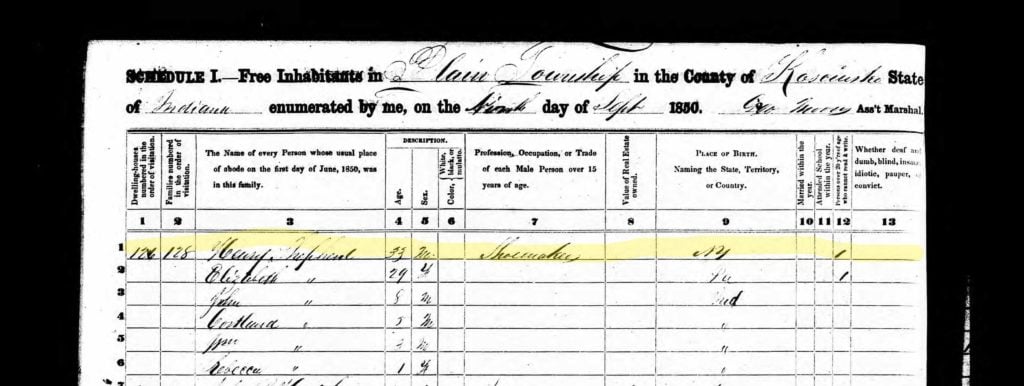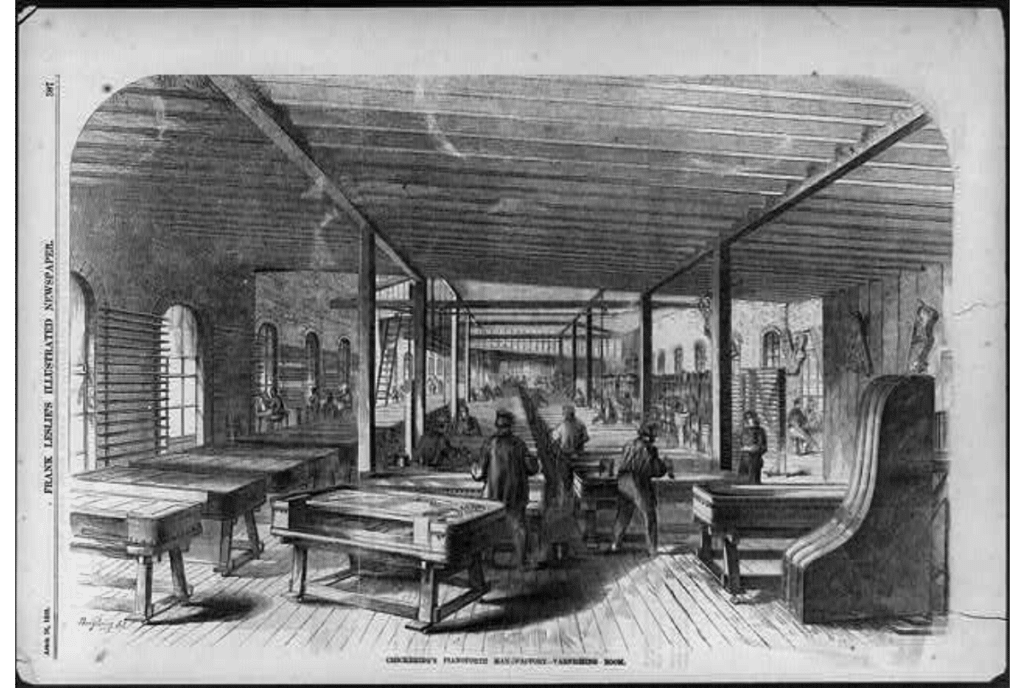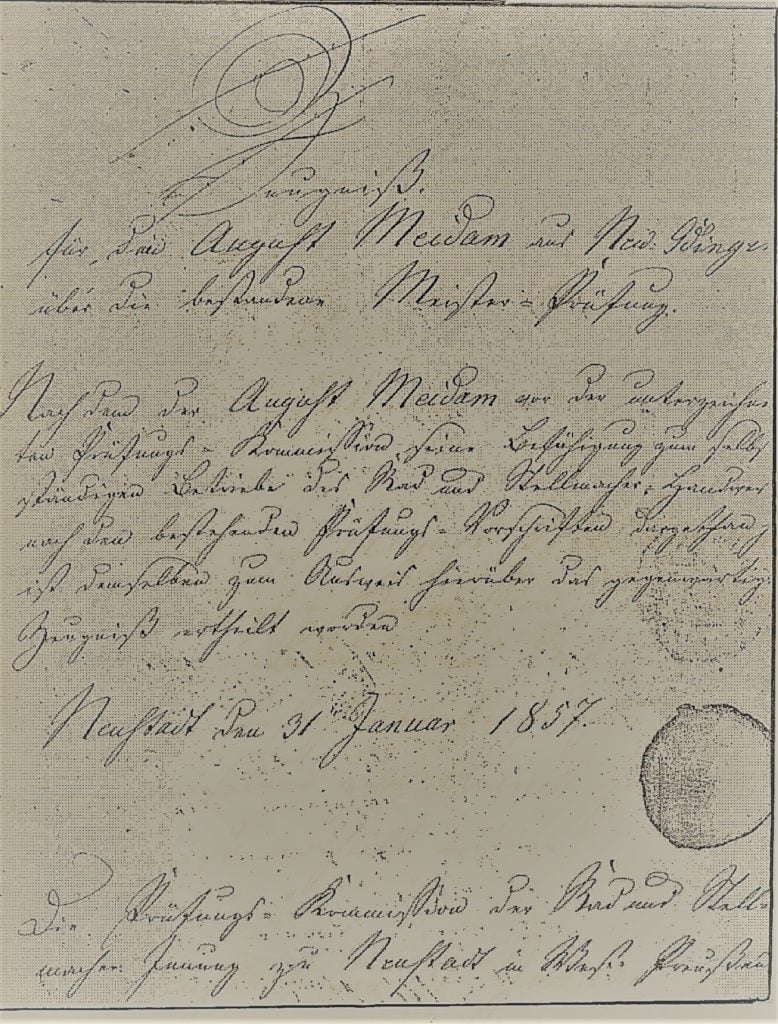Having a difficult time uncovering an ancestor’s occupation? You’re not alone. This detail is a welcome addition to a family tree but if it doesn’t show up in an obvious place – like a census record – it can easily go undiscovered since many of us are unsure where else to look for this information.
But taking the time to figure out what each of your ancestors did for a living helps “flesh out” your family tree and adds depth to the story of your relatives’ lives. It can also provide leads to help you locate additional records and clues about earlier generations.
Here are 9 record sources to check today.
9 Places to Find an Ancestor’s Occupation
1. Birth, Marriage and Death Records
One of the best places to locate job information is in a vital record. Birth, marriage and death certificates, as well as religious records created from these events, often state occupations.
A birth record may contain this detail for one or both parents, while a marriage record often shows the occupation of both people getting married and, sometimes, their parents. A death record often states the last known occupation of the person who passed.
Details vary from record to record so be sure to carefully examine as many as you can.
2. Census Records
Census records often include categories for occupations as a part of the enumeration. The United States Federal Census started listing the occupation of each individual in 1850 and this is a common place that family historians look for job information.
This image shows my ancestor Henry Shepherd on the 1850 Census, living in Plain Township, Kosciusko County, Indiana. His occupation is listed as shoemaker.

There are also references to occupations in earlier census records. From 1810 to 1840, census takers filled out schedules that pertained to certain occupations, including manufacturing, agriculture, commerce, and others.
Each category was marked for each household so, while the record does not state specifically which person worked in which occupation, the fact that you can tell two members of the household worked in mining, for example, gives you a pretty good clue as to what your ancestor did for a living. You can read more about these non-population schedules on FamilySearch.
But what if you can’t find an ancestor in a federal census? Check state censuses next. Many states conducted these censuses in years between when federal enumerations were taking place. You can read all about these records and find links for every state here.
3. City Directories
City directories listed the names and addresses of every person who lived in a city or municipal area. These directories are a great resource because they often listed occupations next to people’s names.
Here is a listing for my great-great grandfather, Charles Schoenrock, in the Outagamie County, Wisconsin directory from 1910. He is listed as the proprietor of the Leeman Creamery in Leeman, Wisconsin.
City directories can be searched through Ancestry (paid) and FamilySearch (free). A large number of directories can also be accessed through the Digital Public Library of America. Some of these can be searched, depending on the library that holds the original directory. Not every municipality published directories and some only did so for limited numbers of years, but it is worth the time to look.
4. Obituaries
Obituaries may also contain information about an ancestor’s occupation. The more recent the obituary, the more likely it is to include extra information like occupation. Much older obituaries, however, were often very short, containing only basic death and burial information.
During the 20th century, obituaries became more of a tribute to the person and more information was included. If your ancestor died after World War I, he or she was more likely to have an obituary that listed an occupation.
5. Personal Papers
If any personal papers for your family still exist, definitely explore them. Pay stubs, time cards, old tax records, licenses, certificates, and membership documents can all give you information about what a person did for a living.
Often this kind of information was discarded long ago, but not always. Trade certificates and licenses, in particular, may have survived as this information was often kept as proof that the person was qualified to work in that trade or profession.
Here is a photo of a trade certificate from 1857 that belonged to my husband’s great-great grandfather, showing that he had passed the examination to become a certified cabinet maker. The certificate is written in German.
Other Sources
If the above sources don’t reveal the work your ancestor did, here are some other places you may want to check. Remember, your relative may have held several jobs throughout their life so it is best to check all available records to get the fullest picture.
6. Employee records – government agencies and large corporations often published employee records, some of which are available through museums and archives. This is especially true for railroads, postal service employees, and people employed in foreign countries. Teachers and other school staff may often be listed in yearbooks.
7. Immigration records – passenger lists sometimes list occupation next to the person’s name. This was dependent on how thorough the record keeper was when taking down information from passengers, but occupations were sometimes included. Find immigration records here, here and here.
8. Draft registration cards – men were required to list their occupation and employer when registering for the draft in the United States. Cards from both World War I and World War II contained this information. Here is an image of my husband’s grandfather’s draft registration card from World War II. It lists his place of employment as Marathon Paper Mills Co. in Wausau, Wisconsin.
Biographical records – these books contain biographies of prominent citizens who lived in a particular area, they are a good resource if you are researching early American or Colonial American ancestors. If your ancestor is included, the biography will contain a comprehensive record of his or her occupation. Here are some places to find these old books online.
These resources should give you plenty of options when searching for your ancestor’s occupation. Good luck!
You might also like:
- This Unique Site Lists Nearly 100,000 Occupational Records for Free
- 10 Common 19th Century Occupations That You’re Not Likely to See Today
- 5 Uncommon Places to Find Your Ancestors’ Missing Parents
By Janet Meydam. Janet is a freelance writer who has over 40 years of experience in genealogy research. Her knowledge includes researching many different records from the United States, Germany and Poland. She is also a co-author of her parents’ family history book “I Come from a Long Line of Dilleys.”
Image credit: Chickering’s Pianoforte Manufactory – varnishing room, Tremont Street, Boston, Mass. Library of Congress.




Great info and all somewhat assessable and definitey informative. Thank you for sharing this info